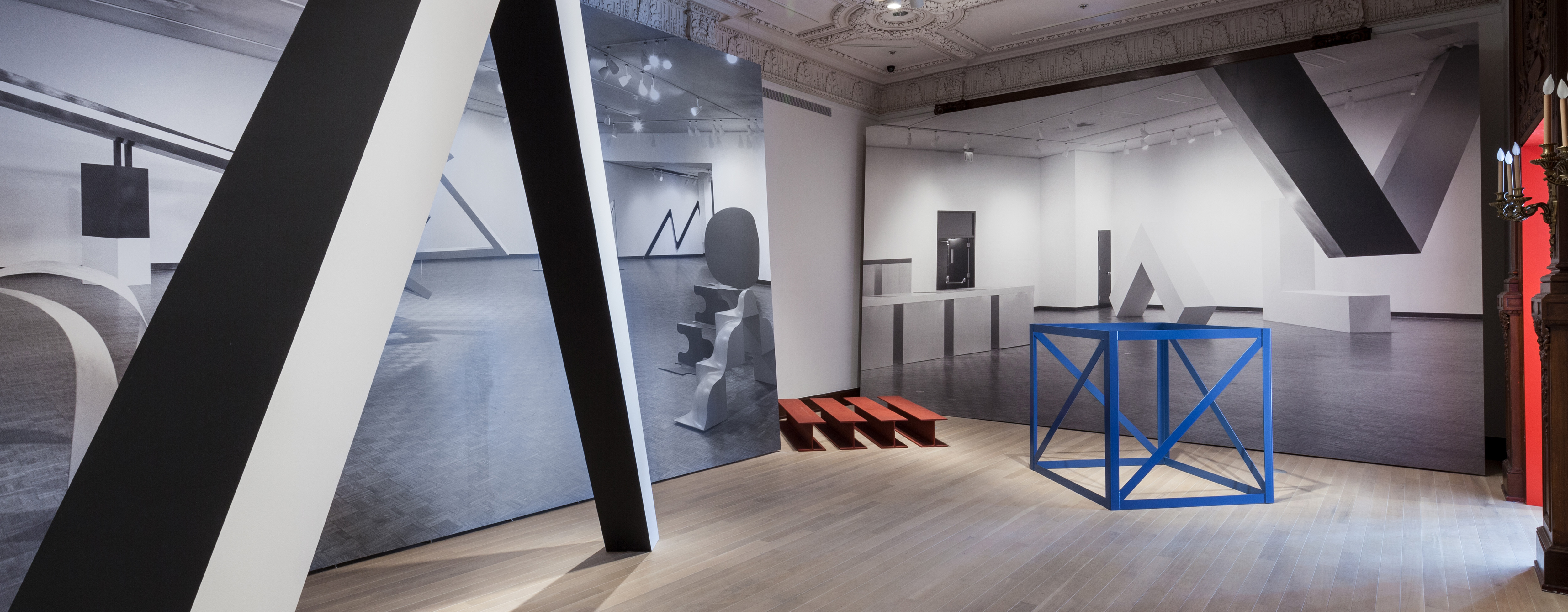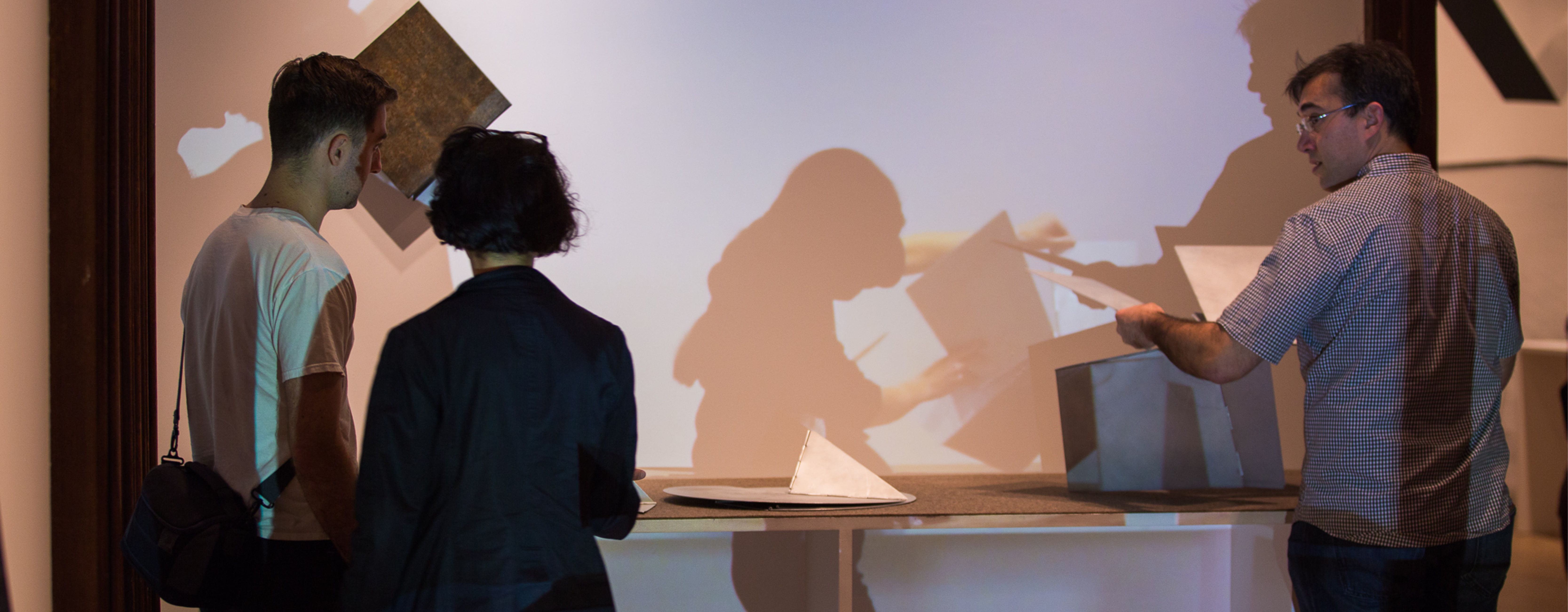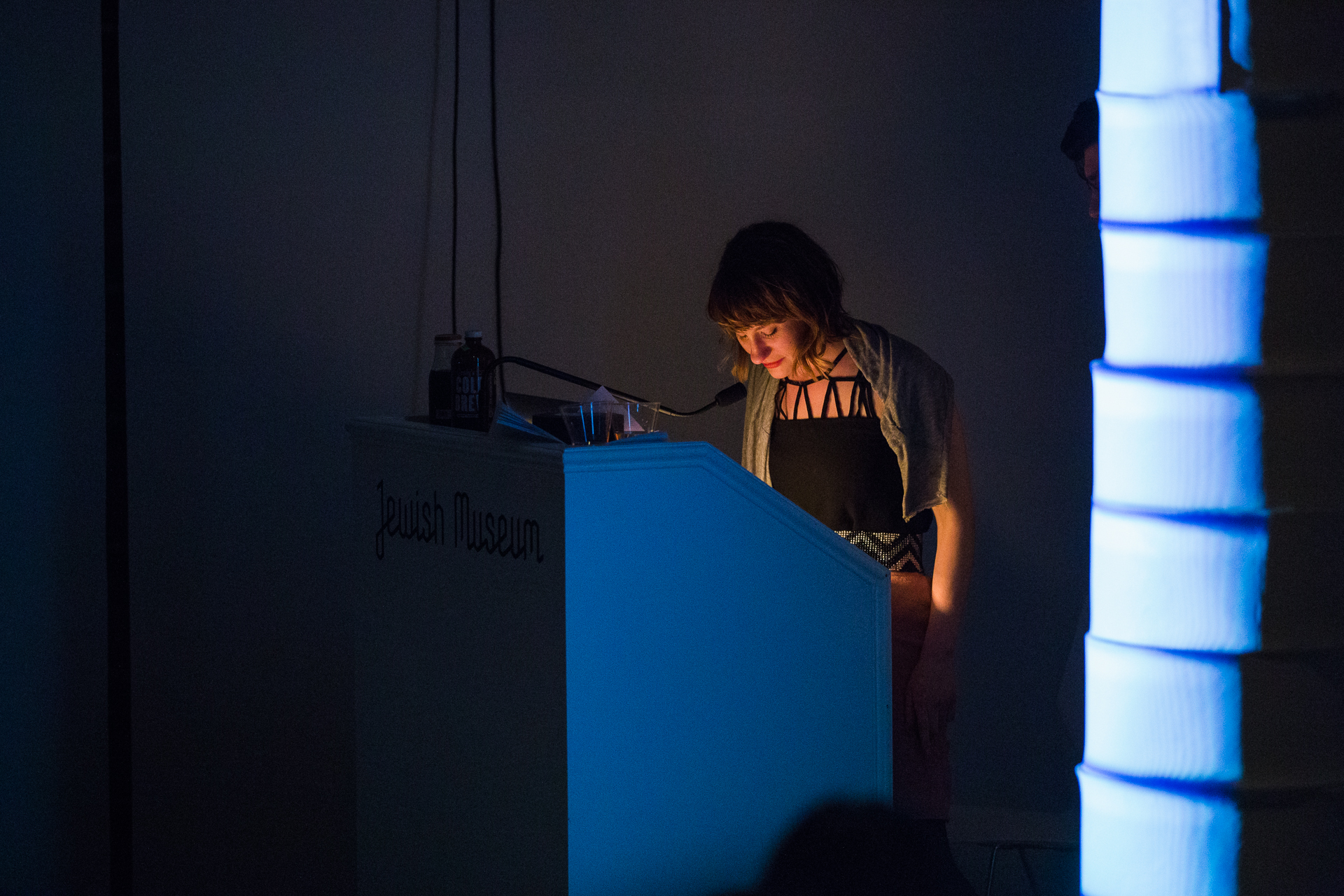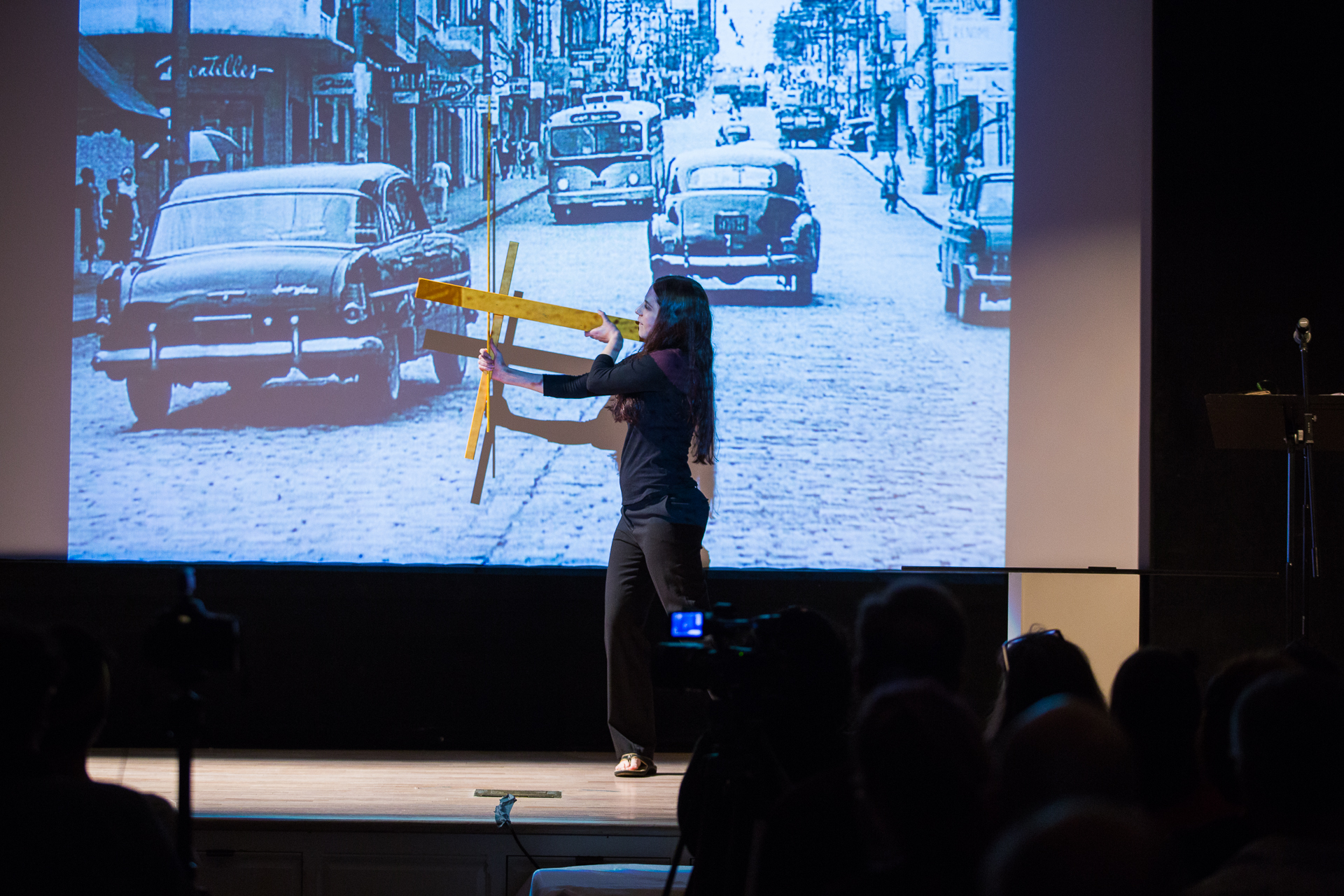







IN RESPONSE:
Other Primary Structures
Other Primary Structures
Sunday, May 11, 2014
6:30 pm EST
6:30 pm EST
Primary Structures: Younger American and British Sculptors, the Jewish Museum’s seminal 1966 exhibition, was the first American museum exhibition to survey the style now known as Minimalism. Other Primary Structures revisited this formative moment in art history, reexamining it from today’s far more global perspective. Columbia University Visual Arts MFA candidates and recent alumni presented new video, performance, and installation-based artworks in response to the exhibition in the first IN RESPONSE: program.
Participating Artists:
Lea Cetera
Daniela Di Donato
Laura Miller
Tracy Molis
Xiaoshi Qin, aka Vivian Vivian
Jordan Rathus
Julia Sherman
Matthew C. Wilson
See the program brochure︎
Participating Artists:
Lea Cetera
Daniela Di Donato
Laura Miller
Tracy Molis
Xiaoshi Qin, aka Vivian Vivian
Jordan Rathus
Julia Sherman
Matthew C. Wilson
See the program brochure︎

Lea Cetera
Playing with History
Video Installation
A performative video intervention with Lygia Clark’s interactive pieces Double Crab (1960), Monument to All Situations (1962), and Critter in Itself (1962). Playing with History confuses time, space and experience.
Video Installation
A performative video intervention with Lygia Clark’s interactive pieces Double Crab (1960), Monument to All Situations (1962), and Critter in Itself (1962). Playing with History confuses time, space and experience.

Daniela Di Donato
Reactivating Subjectivity
Video
Three videos take over the museum’s navigational wayfinding screens, reorienting space and time. Each one represents a subjective activation of objects in ways that speak to the real life of sculptures in Other Primary Structures.
Anti Time Machine
Video
The sand of an hourglass has been replaced by thousands of living ants, moving freely, at their own pace and in their own directions.
Video
Three videos take over the museum’s navigational wayfinding screens, reorienting space and time. Each one represents a subjective activation of objects in ways that speak to the real life of sculptures in Other Primary Structures.
Anti Time Machine
Video
The sand of an hourglass has been replaced by thousands of living ants, moving freely, at their own pace and in their own directions.

Laura Miller
To Up
Performance
Miller explores the simultaneous construction and discussion of minimal forms with ceramicist, neuroscientist and collaborator Armen Eniklopov. Using materials of common life crafts—white porcelain and Microsoft PowerPoint—the space for sculpture is formed through performance in time.
Performance
Miller explores the simultaneous construction and discussion of minimal forms with ceramicist, neuroscientist and collaborator Armen Eniklopov. Using materials of common life crafts—white porcelain and Microsoft PowerPoint—the space for sculpture is formed through performance in time.

Tracy Molis
A Numbers Station for Radical Shapes
Performance
A story about Other Primary Structures’ floating objects in space. A “numbers station” was a Cold War-era method of data encryption where messages were transmitted via shortwave radio broadcasts. Through the 1960’s, spies received important radio messages encoded in numbers, letters and short bursts of song. What would Hélio Oiticica’s yellow spatial reliefs or Edward Krasiński’s arrows sound like in a covert broadcast over the airwaves?
Performance
A story about Other Primary Structures’ floating objects in space. A “numbers station” was a Cold War-era method of data encryption where messages were transmitted via shortwave radio broadcasts. Through the 1960’s, spies received important radio messages encoded in numbers, letters and short bursts of song. What would Hélio Oiticica’s yellow spatial reliefs or Edward Krasiński’s arrows sound like in a covert broadcast over the airwaves?
Xiaoshi Vivian Vivian Qin
ART-G: A Debate Competition
Performance
A high-school-level debate competition on art and globalization.
Performance
A high-school-level debate competition on art and globalization.

Jordan Rathus
Lenny Dos
Performance
In collaboration with Tiny Rothko, a compilation of Lenny Bruce stand-up routines from 1959-1966. Rathus explores the outsider art practice of stand-up comedy as a political platform as she transitions from Bruce’s early, funnier days on the Steve Allen show to the performances leading up to his death, in which he focused completely on the details of his obscenity trials.
Performance
In collaboration with Tiny Rothko, a compilation of Lenny Bruce stand-up routines from 1959-1966. Rathus explores the outsider art practice of stand-up comedy as a political platform as she transitions from Bruce’s early, funnier days on the Steve Allen show to the performances leading up to his death, in which he focused completely on the details of his obscenity trials.

Julia Sherman
In No Uncertain Terms
Performance
Sherman presents femme queer punk band Malportado Kids, whose Spanish moniker translates to, “poorly-behaved kids,” comprised of a rabble-rousing pair of activists, Victoria Ruiz and Joey L. DeFrancesco. These two performers unequivocally and unabashedly rage against “primary structures” in their politically charged performance.
Performance
Sherman presents femme queer punk band Malportado Kids, whose Spanish moniker translates to, “poorly-behaved kids,” comprised of a rabble-rousing pair of activists, Victoria Ruiz and Joey L. DeFrancesco. These two performers unequivocally and unabashedly rage against “primary structures” in their politically charged performance.

Matthew C. Wilson
Reticules
Installation
Reticules has two components. The ongoing component, a color experience that evokes Hélio Oiticica’s experiments with color, can be seen in the restrooms off the corridor that joins the auditorium and the gallery. This accompanies a video component that will be screened in the auditorium.
Video
In this video, the camera moves towards and away from the “super graphics” of the original Primary Structures exhibition installed as part of Other Primary Structures. Visual patterns emerge and dissolve; a section of audio from Hélio Oiticica’s Porta Curtas (1979) provides the sound track.
Installation
Reticules has two components. The ongoing component, a color experience that evokes Hélio Oiticica’s experiments with color, can be seen in the restrooms off the corridor that joins the auditorium and the gallery. This accompanies a video component that will be screened in the auditorium.
Video
In this video, the camera moves towards and away from the “super graphics” of the original Primary Structures exhibition installed as part of Other Primary Structures. Visual patterns emerge and dissolve; a section of audio from Hélio Oiticica’s Porta Curtas (1979) provides the sound track.
Installation views of Other Primary Structures. 2014 The Jewish Museum. Photo by David Heald. Event photography by Da Ping Luo.